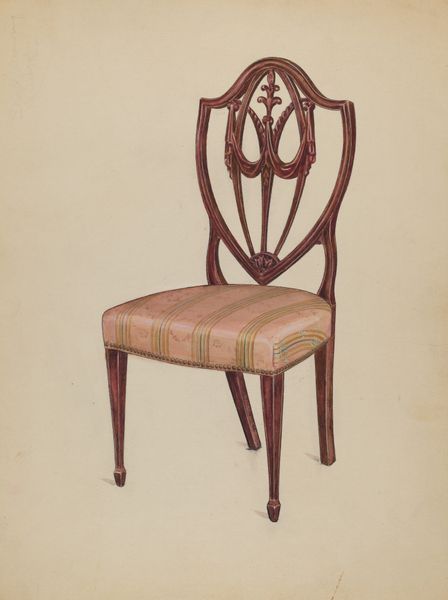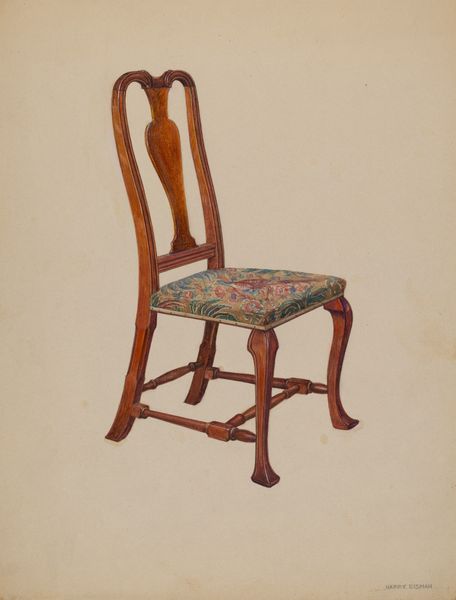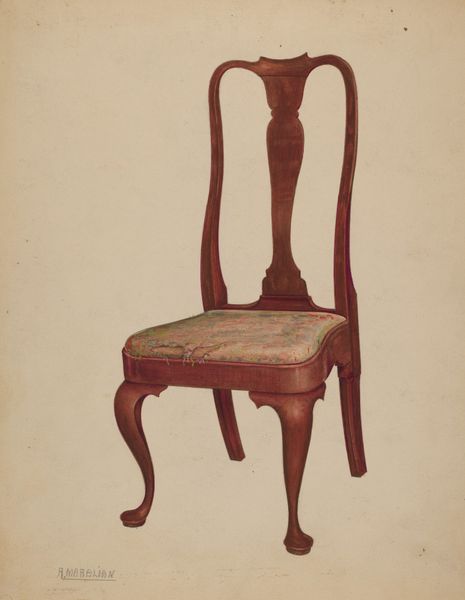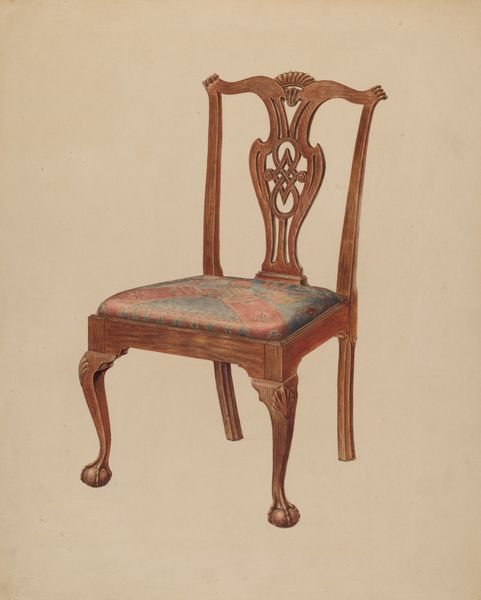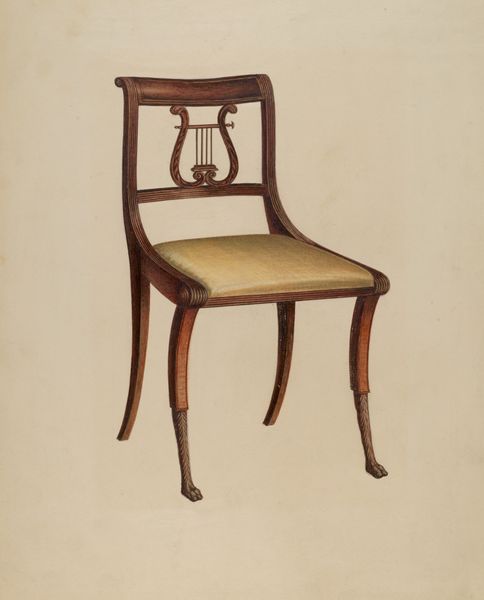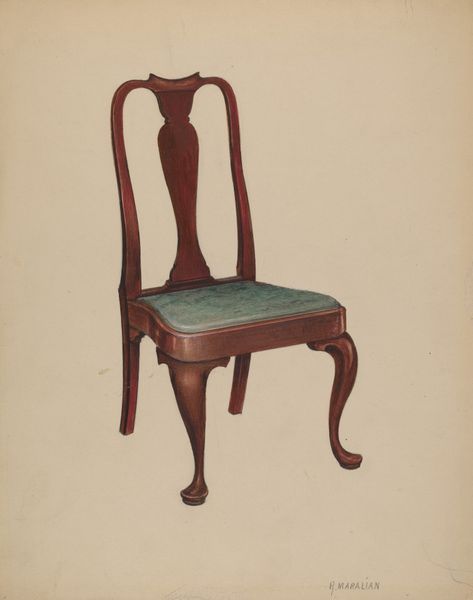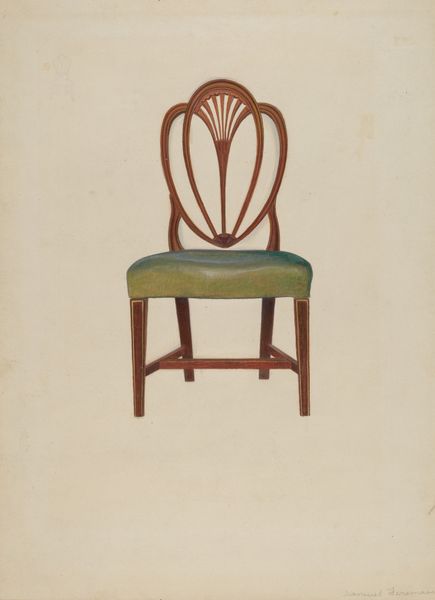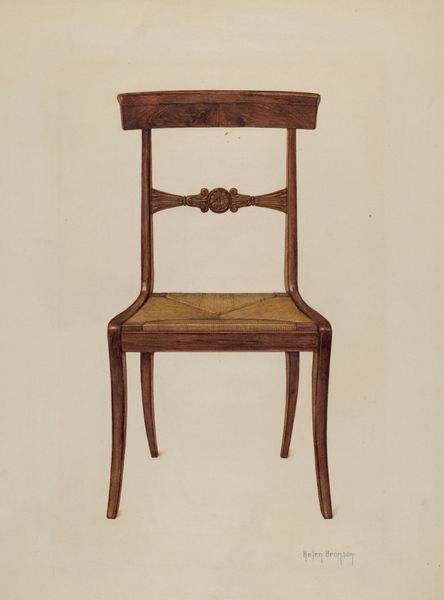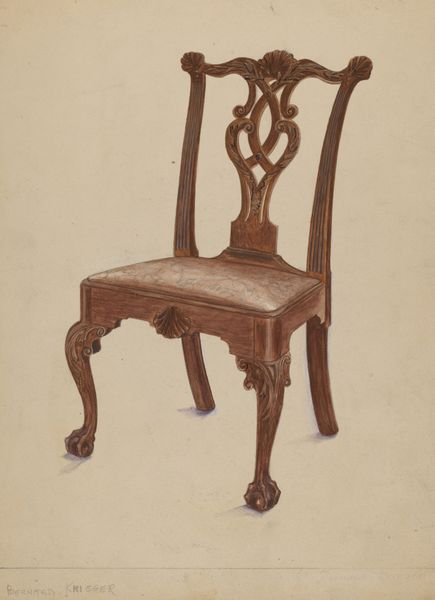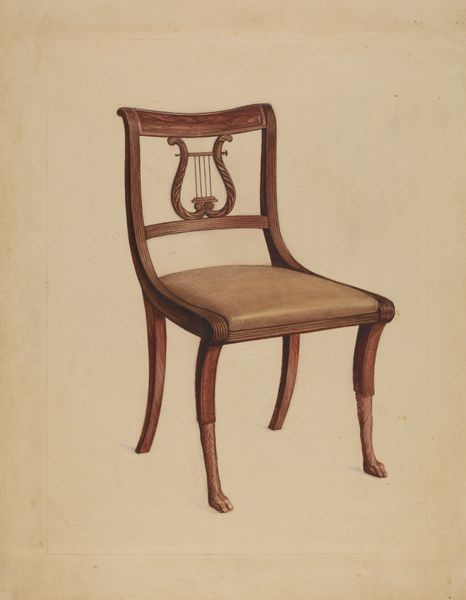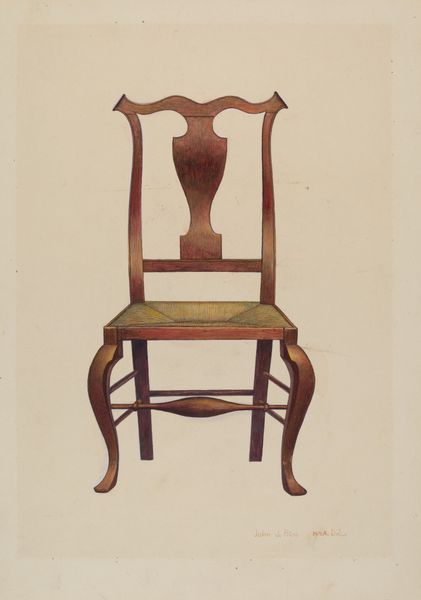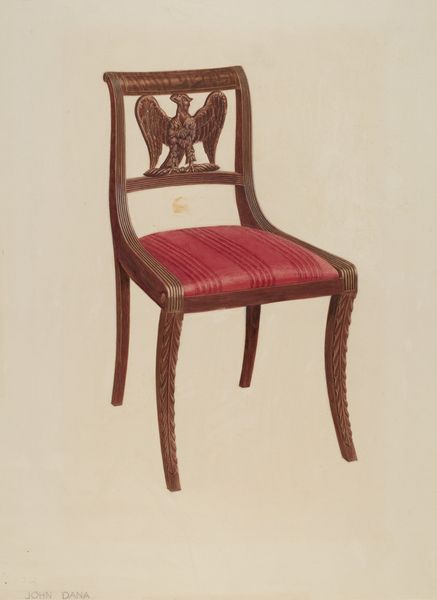
drawing, watercolor
#
drawing
#
watercolor
#
historical fashion
#
watercolour illustration
#
decorative-art
Dimensions: overall: 30 x 22.8 cm (11 13/16 x 9 in.) Original IAD Object: none given
Copyright: National Gallery of Art: CC0 1.0
Curator: Right, let’s take a look at Michael Trekur’s “Side Chair,” created in 1936, rendered with watercolor and drawing techniques. Editor: Oh, it’s like a polite little drawing, isn’t it? Sort of whispers "good taste" instead of shouting it. Gives me a quaint feeling—like I should be sipping tea while looking at floral wallpaper. Curator: The chair form itself echoes Neoclassical designs, notably those Grecian urn motifs adapted into furniture during the late 18th century. It suggests order, refinement, even a kind of republican virtue... albeit domesticated for the American home. Editor: Domestication indeed! Look at how delicate those legs are. Not exactly built for rough-and-tumble living. More like for quiet reflection, in an environment where every object has a certain, studied elegance. And that fabric—very subtle stripes. Everything works towards this atmosphere of…gentle restraint. Curator: Restraint is key here. The decorative elements are strategically placed, meant to elevate rather than overwhelm the basic chair form. Think of these forms, repeated throughout Western decorative arts, as a cultural shorthand, silently signaling particular social values and a respect for the antique. Editor: And yet, in the 1930s, there’s also a sense of looking back for comfort, isn't it? Considering what was happening globally then, maybe embracing these familiar, elegant forms offered a much-needed sense of stability? It's intriguing how these objects, these images become anchors during times of uncertainty. Curator: Precisely. It illustrates how we often recycle and reinterpret historical symbols to navigate the present. The urn shape isn’t merely decoration; it's a reference to rituals of mourning, memory, and the cyclical nature of existence—themes that would likely resonate in any era. Editor: You know, I think what’s most affecting about it is the feeling of aspiration. Even rendered as a watercolor, this chair is not just an object. It’s an idea—a lifestyle sketched out in the faintest of strokes. It’s longing, almost. Curator: Absolutely. Through a relatively modest drawing, we glimpse the power objects have to embody and transmit cultural dreams. Editor: Dreams whispered from one generation to the next, in the quiet elegance of a single chair.
Comments
No comments
Be the first to comment and join the conversation on the ultimate creative platform.
